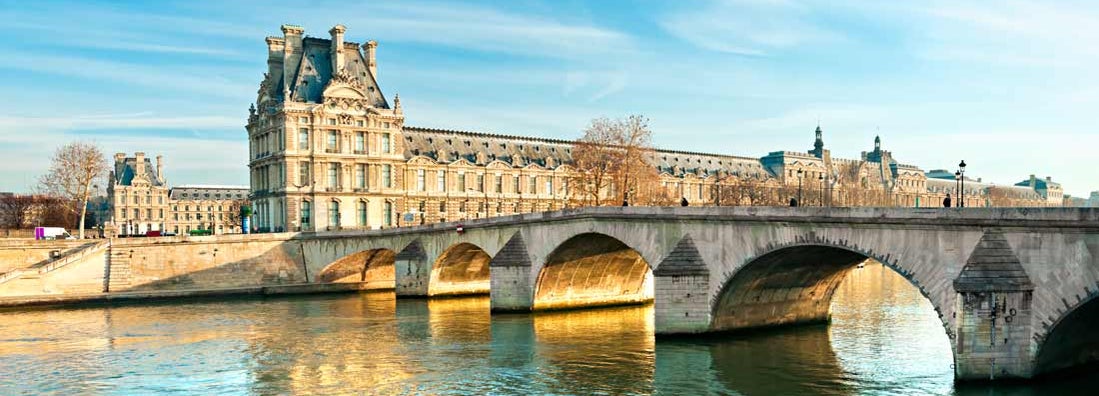How to Insure the Louvre

Candace Jenkins is a licensed insurance advisor with over a decade of experience. She is also a writer and loves to write on all things insurance. Candace writes for TrustedChoice.com on a continuous basis and is here with the facts about all your insurance inquiries.

Small or large, all art collections need to be protected. So to help you understand those coverages, let's talk about common insurance needs at a macro level, illustrated through the needs of Parisian mega-gallery, the Louvre. Understanding their risks will help you understand your own insurance coverage better and how an independent insurance agent can get you protected properly, just on a much smaller scale.
How Do You Insure the Louvre?
The expansive palace that houses the art and historic artifacts dates back to the late 12th century when it was home to kings and French heads of state up until 1870.
This palace, you may say, is priceless and impossible to insure. And while that may be true in some respects, it does have insurance policies in place. Insurance on items that are of unbelievable value like the Louvre itself typically has a retention limit where the owner or country is responsible. Retention is also known as a deductible. For example, the Louvre could be accountable for the first 20 million of a claim, and the insurance company would cover the rest.
When it comes to priceless art pieces and artifacts collected by ancient civilizations, then you'd better have some insurance coverage in place in case of theft, damage, or other covered claims.
Essential Property Coverage for the Louvre
The Louvre is home to some of the greatest masterpieces known to the world, including the famous Mona Lisa by Leonardo da Vinci.

Art of that value requires some serious insurance coverage, and that would fall under the museum's property insurance policy.
- Property coverage: This is available to businesses, municipalities, non-profits, and private citizens alike. It provides coverage up to a predetermined dollar amount in the form of replacement cost, actual cash value, or depreciated value.
- Replacement cost: This is the amount that it would cost to replace any one piece of propery or building to like, kind, and quality.
- Actual cash value (ACV): This is the amount it would cost to replace an item or building to what it is worth at the time of the loss.
- Depreciated value: This is what the item or building would be insured for minus depreciation. Think of a roof that is 15 years old and has already suffered regular wear and tear, but now needs to be entirely replaced because of a fire. If you have depreciated value on your roof, then the insurance policy would respond in the amount it would cost to replace your roof to like, kind, and quality minus the depreciated amount due to the years of wear and tear.
When it comes to insuring the Louvre's palace and the art and history inside, the insurance policy likely has a very high retention amount followed by a coverage amount for only very catastrophic events that occur above and beyond their initial retention.
Coverage for Your Personal Art Collection
If you are insuring your collection of art and have high-dollar items, your independent insurance agent has a fine arts policy. A fine art policy allows you to schedule such things typically under your homeowners insurance or a separate policy altogether.
Necessary Liability Coverage for the Louvre
The Louvre has an estimated 15,000 visitors per day, which means their general liability insurance policy needs to be good. General liability will protect a business when they get sued due to bodily injury or property damage to others. Every time the Louvre opens its doors, the risk that someone will get injured or have belongings damaged while on premises begins.
That's a hard clock to stop, and it turns this museum's liability policy into a must-have. The insurance company that wrote the Louvre's liability policy likely requires them to have proper safety measures in place when allowing that many visitors daily. The per occurrence and total aggregate coverage amount that they must have will be in the multi-millions.
Umbrella Coverage for the Louvre, is This a Thing?
You may know the old saying "to whom much is given, much is required." Well, there's no different here. The Louvre is a hot spot to locals and tourists alike, which creates a liability exposure that could be horrendous when a claim occurs.
An umbrella policy will give the Louvre additional liability protection above and beyond their underlying general liability policy limits. An umbrella policy, just like your business umbrella policy or your personal umbrella policy, is essential for those catastrophic claims that exceed your underlying coverage.
Employee Coverage for the Louvre
The Louvre is roughly 652,300 square feet packed with history and beauty. That's a large area that needs a lot of employees to keep it running.
Protection for those employees can be found through a workers' compensation policy.
- Workers' compensation insurance: This policy provides coverage for your employees when they get injured or ill while on the job or as a result of doing their job.
The Louvre's staff may not have a high risk when it comes to obtaining an injury on the job, but they may be in a high-risk situation while at work. Museums have long been know as targets for theft, and not just any theft — but very smart, very bright theft. It takes a lot of brainpower to pull off a heist in a profoundly secure building.
In fact, in 1911, there was an art heist of epic proportions when a handyman by the name of Vincenzo Peruggia stole the famous Mona Lisa painting from the Louvre. In a claim to return it to Italy, Peruggia wasn't caught for two years following the theft. The Mona Lisa finally returned to the Louvre and made a splash in the media, making it even more famous than it was before.
The Cost of Fine Art Insurance Based on Location
The cost to insure the Louvre and the historic art residing within its walls is not necessarily costly because of the location of the museum, but more so because of the price to replace such items.
When insuring fine art and palaces for that matter, your area has a little to do with rates when there is high crime around or more risk exposure. Some of the main impacts on insurance premiums are as follows:
- Are there any past claims?
- The dollar amount it takes replace property, whether it's art or palaces.
- The coverage limits and how high or low they are.
- The number of staff employed and their job duties.
- The safety measures proactively taken or not taken.
- The general public is allowed on premises with associated risks .
All in all, many factors go into an insurance premium. Your independent insurance agent can help with your own mini Louvre art collection and rates won't likely be as high.
Here's How an Independent Insurance Agent Would Help
When it comes to an art collection like the Louvre, the needs are so big that they're typically insured through a broker, or even brokers, who can shop and negotiate all the different coverages they need. Independent insurance agents may not be able to handle that size of coverage, but they can tackle the insurance needs of just about anything you could ever ask for. And they work in a similar way too.
Independent insurance agents gather information about your needs and shop multiple companies to find the right coverage and cost for you. Find an independent insurance agent in your community here.